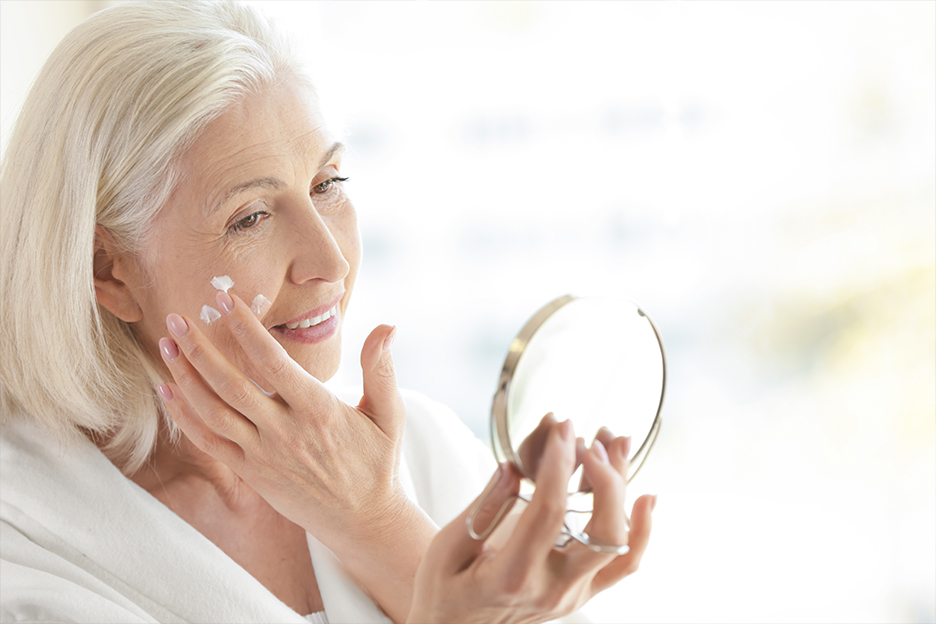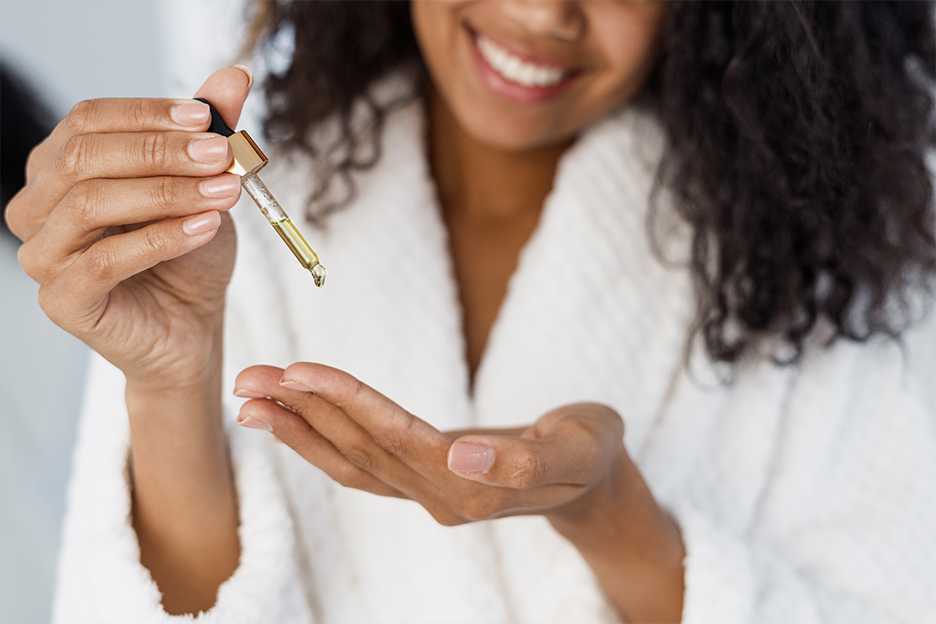If you have a beauty routine, you probably care about having a healthy complexion. However, you could be damaging your skin without realizing it. Here are five habits you should break to keep your skin looking beautiful. Plus: Three pairs of active ingredients you should never use together!

Beauty habits that can damage your skin
1
Exfoliating too often
Exfoliation has many benefits for the skin. It removes impurities from deep within the skin and gets rid of dead skin cells, leaving your face baby soft. However, exfoliating more than twice a week can do more harm than good! Overexfoliating can even damage the hydrolipid film that forms the skin’s protective barrier. This can result in irritation, redness, dryness, acne, and other issues.
The skin barrier takes a long time to recover, so it’s important to adopt a good exfoliation routine from the start. Limit yourself to exfoliating once or twice a week, and always apply a high-quality moisturizer and sunscreen afterward to keep your skin hydrated.
2
Not using a moisturizer because you have oily skin
Did you know that oily skin can be sensitive and dry, too? Products that regulate sebum production and treat acne, which are often recommended for oily skin, can be very harsh sometimes. Unfortunately, these products can damage your skin barrier, which is responsible for keeping skin hydrated. For this reason, oily skin is often dehydrated!
Use a moisturizer every day after cleansing. Choose moisturizers containing hazelnut, jojoba, or hemp oil, which regulate sebum production while providing deep hydration.
3
Cutting corners with your anti-aging routine
Using only an anti-aging face cream or serum isn’t enough to reduce the signs of aging. For best results, you should use both, since they complement each other.
A good serum will aggressively target signs of aging with a higher concentration of active anti-aging ingredients such as retinol, hyaluronic acid, and vitamin C. An anti-aging face cream will take care of hydrating your skin (although they tend to have a lower concentration of active ingredients). It’s best to apply creams after serums, as serums can be hard on the skin.
4
Not using sunscreen
Exposure to UV rays is one of the causes of skin aging, but it’s also a significant risk factor for skin cancers. That’s why it’s so important to apply sunscreen every day. Warning: foundations with SPF don’t provide adequate sun protection on their own!
Choose a sunscreen that’s formulated for your skin type and incorporate it into your skincare routine. Apply it after your moisturizer and before any makeup. You can even finish things off with a touch of SPF-containing lip balm for extra protection.
5
Using the wrong foundation for your skin type
Do you suffer from shiny skin or clogged pores after applying foundation? You might be using the wrong product. There’s a reason there are so many different types of foundation out there—you need to find the right one for your skin type! Here are a few key points to help you make sense of all your options.
- Powder foundation: best for oily or combination skin that’s prone to imperfections; say goodbye to shiny skin!
- Liquid foundation: best for dry skin; look for moisturizing ingredients for an extra dose of hydration.
- Cream foundation: best for normal skin; it provides optimal coverage.
Active ingredients you should never use together

1
Retinol and AHAs
Retinol is a powerful antioxidant known for its anti-aging properties. It boosts collagen production and stimulates blood circulation to reduce the appearance of wrinkles and dark spots. It’s found in many anti-aging serums and creams.
AHAs (alpha hydroxy acids) are chemicals that exfoliate the skin and soften wrinkles. Glycolic acid and lactic acid are examples of AHAs.
Retinol and AHAs are both very powerful anti-aging ingredients, which is why they can be irritating when combined. If you want to use products containing these ingredients, remember not to apply them at the same time. Instead, try using AHAs in the morning and retinol at night.
2
Retinol and benzoyl peroxide
Benzoyl peroxide is commonly found in acne treatments. It’s an oxidizing agent that kills bacteria, reduces sebum production, exfoliates, and much more. When mixed with retinol (which is also very potent), it can cause excessive dryness and even skin peeling. If you need another reason to avoid this combo of ingredients, they actually cancel each other out because one is an oxidant and the other is an antioxidant.
It’s best to use benzoyl peroxide with gentle cleansers and moisturizers that don’t contain retinol. Or, you can alternate the two: apply your benzoyl peroxide product in the morning and your retinol product at night.
3
Vitamin C and acids
Vitamin C is a powerful antioxidant used primarily for its anti-aging properties. Products containing pure vitamin C need a moderately acidic pH (3 to 4) to be effective. Mixing other acids (such as AHAs, BHAs, and hyaluronic acid) with a vitamin C product can change your skin’s pH and negate the benefits of vitamin C. Don’t worry, though—it won’t damage your skin.
To reap the full benefits of vitamin C and acids, it’s best to use them at different times of the day.
Last updated on November 23, 2022
Need help building a skincare routine for your skin type?
Stop by a Brunet store to speak with one of our dermocosmetic specialists.
